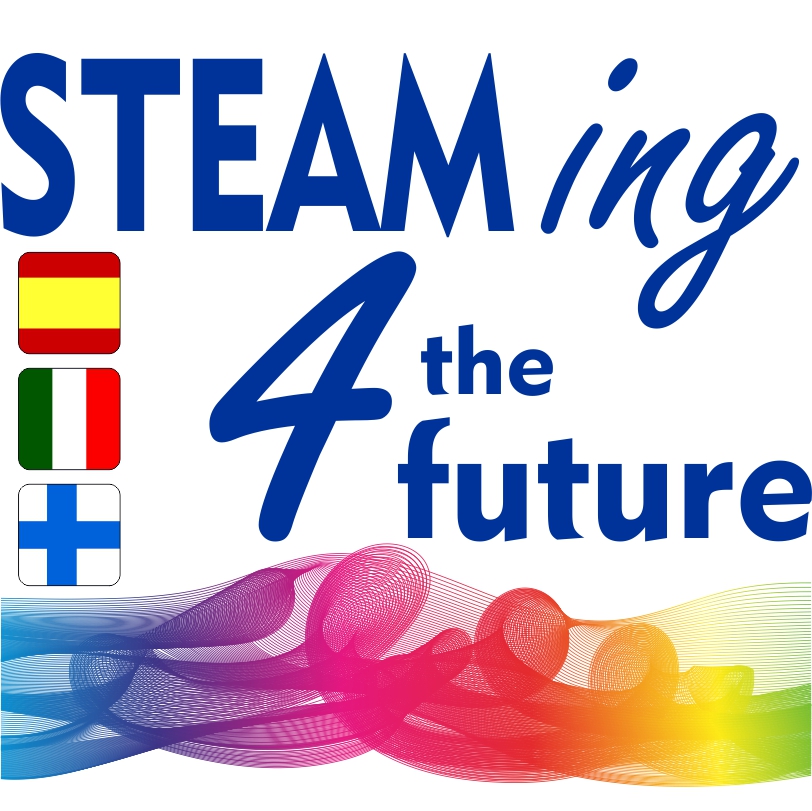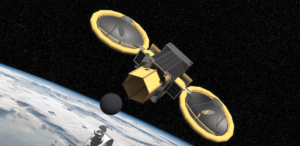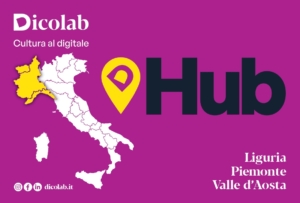
A Success of Commitment and Joy: The 2025 Italian FIRST LEGO League Final in Genoa
On March 22–23, 2025, the Conference Center at the Magazzini del Cotone in Genoa hosted the National Final of the 2025 FIRST LEGO League, an

The Erasmus plus project STEAMing for the Future launches a Space Mining Challenge!
Hunting for Asteroid Treasures
NASA studies reveal that the amount of minerals stored in the belt of our Solar System between the orbits of Mars and Jupiter is of enormous value: gold, platinum, tungsten, water. Asteroids have always been much studied by scientists because they are what remains of the formation of the planets and moons that surrounded the young Sun. Humanity has seen in them the opportunity to obtain very valuable minerals that are scarcer and harder to find on Earth.
In all asteroids there are valuable minerals that we are running out of on Earth, such as iron, nickel, iridium, platinum, palladium, magnesium, rhodium, osmium or ruthenium. Iridium, for example, is difficult to find because of its high density and its tendency to fuse with iron, which causes it to sink below the Earth’s crust. Platinum, on the other hand, is the most expensive metal of all.
The concentrations of these metals in asteroids are higher than on our planet. Some researchers claim that the one asteroid that is rich in platinum, being only 500 metres in longitude, may contain more platinum group metals than all those that have been mined in Earth’s history.
On Earth, we have a limited amount of rare earth elements, particularly platinum group metals. These are industrial metals that are used in mobile phones, cancer treatments, drugs, catalytic converters, and we are depleting them. In addition, we are mining some are minerals from less developed nations, exploiting the local workforce and often polluting and damaging the environment.
So you will understand how important it is to reach the asteroids and get the minerals.
So-called space mining is a long-term venture because it is complex, expensive and in its infancy, still unprofitable. But it is a goal of the future if we want to preserve our planet by reducing intensive exploitation.
A major challenge is deciding which asteroids to locate for extraction. Before conducting their missions, all the start-up mining companies need to do is to obtain observation data from researchers.
In October 2022, NASA confirmed that the impact of the DART mission changed the movement of the asteroid in space https://www.nasa.gov/press-release/nasa-confirms-dart-mission-impact-changed-asteroid-s-motion-in-space. That means that asteroids could be successfully redirected .

NASA rendering of an asteroid mission. Credits: NASA
The challenge
We need to send a robotics module that can catch the asteroid in order to dig and obtain the valuable minerals. To do this, the following steps must be planned, one by one.
Step 1 Outward journey
We have to catch the asteroid. Using the appropriate sensors, locate the asteroid and catch it. On a map you have prepared, or on the floor, using the appropriate sensors, program the robot to travel from Earth to the asteroid following a line marked between the two. The robot will start the test by placing the sensors at the point where there is the line on the Earth. You can draw the Earth and the asteroid on sheets of paper, or place two objects (balloons?)
Phase 2 Cleaning the field
The robot arrives near the asteroid and pulls up, catching it. Now that we have blocked the asteroid, we have to clean the asteroid field by moving all objects that may disturb our search located within the area where we will be looking for minerals.
We place 4 cubes, representing objects that we need to move to make the field clean and start the search, on our simulated asteroid; the robot must drag away the 4 cubes that are inside a black circle with a white border. The cubes will be placed randomly; therefore the students will throw them from a height of 1 metre trying to keep them inside the circle of the fence. The robot must push the cubes out of the marked area.
Step 3 Locating the ore
Once the fenced area is cleared, using the sensors, we start searching and locating the spot where we want to dig and extract the minerals. The robot locates a small white circle inside the black circle (fenced area) by limiting it with some barriers. The robot cannot move any of the barriers. The robot will start the test from the centre of the white circle with the front facing the Earth and the white circle will be randomly located. For this purpose, the white circle will be positioned by the teacher who changes its position from time to time. The barriers will have an approximate height of 8 cm and must be located to enclose the entire black circle. The white circle will have the thickness of cardboard and its diameter will be 3 cm.
Step 4 Return journey: Mission accomplished!
Back to Earth! Following the same path as in Phase 1, we will make the same journey following the opposite direction. The robot retraces the path of Phase 1 again in the opposite direction. It will go from the asteroid to Earth, following the traced path. The robot will start the test by placing the sensors at the point where the line is on the asteroid.
All tests will be performed on an 84 cm x 59.4 cm.
Phase 5 Celebration dance
This activity can be performed with one or more robots, performing a typical or traditional dance of their country of origin. The maximum time will be 1 minute and will take into account not only the dance but also the staging, set design, instruments, costumes, etc,
Participate in the challenge! Send your videos, lasting 1.30 minutes, by 22 November to: operto@scuoladirobotica.it Record them horizontally (to be uploaded on Instagram)
For information: operto@scuoladirobotica.it

On March 22–23, 2025, the Conference Center at the Magazzini del Cotone in Genoa hosted the National Final of the 2025 FIRST LEGO League, an

In March 2025, a 12-hour course for each second-year class at the IC Quarto school in Genoa was concluded, organizwed by the School of Robotics.

More than 40 free training courses for the digital transformation of the cultural sector planned It will be inaugurated on Wednesday, March 19, 2025, at

The annual meeting of PRAESIIDIUM, the Horizon project dedicated to developing artificial intelligence algorithms (physics-informed machine learning) to predict a person’s risk of developing prediabetes,
Write here your email address. We will send you the latest news about Scuola di Robotica without exaggerating! Promised! You can delete your subscription whenever you want clicking on link in the email.

© Scuola di Robotica | All Rights Reserved | Powered by Scuola di Robotica | info@scuoladirobotica.it | +39.348.0961616 +39.010.8176146 | Scuola di robotica® is a registered trademark